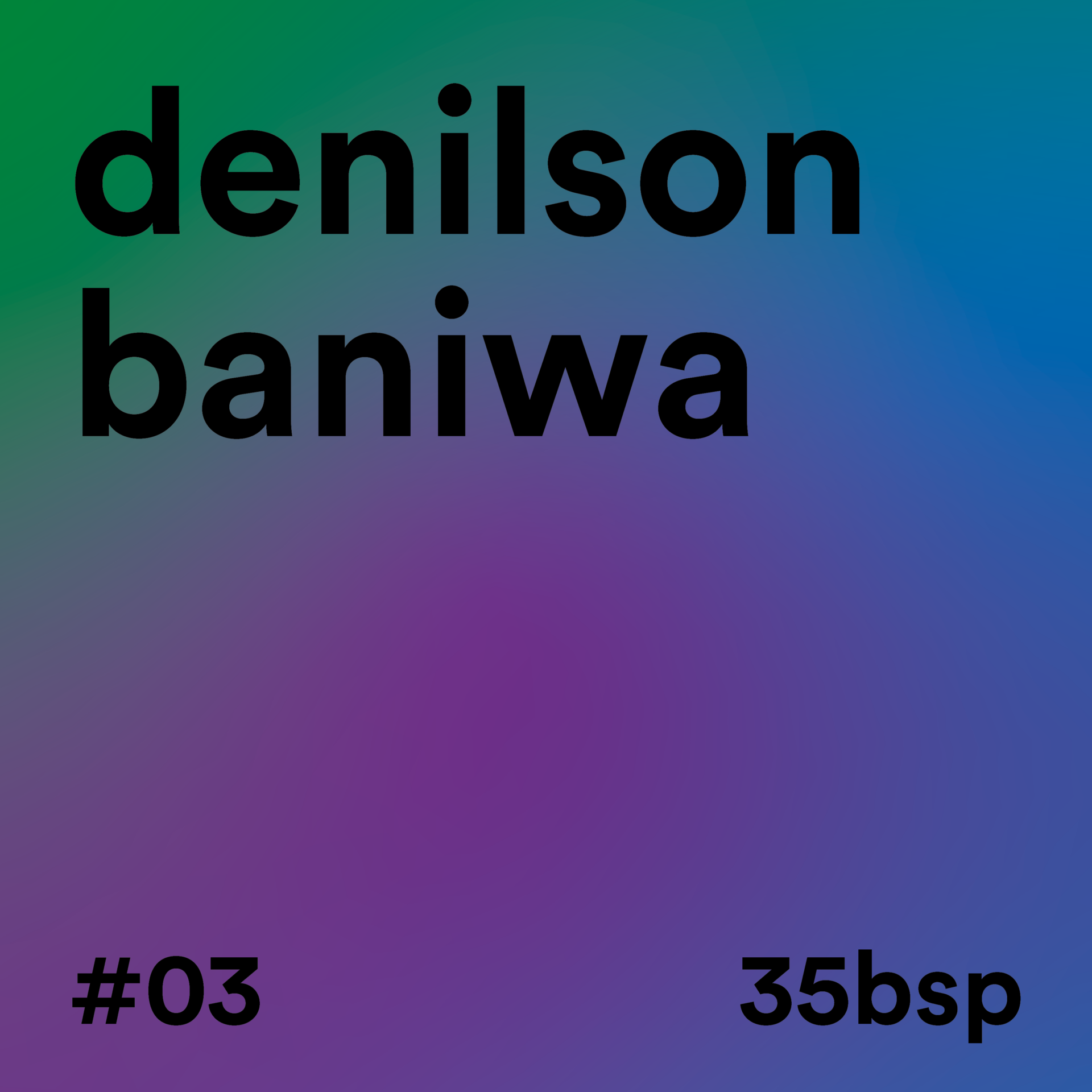
Denilson Baniwa
Born in Barcelos, in the state of Amazonas, Denilson Baniwa is an artist and activist for the rights of Indigenous peoples. From the Baniwa people, he currently lives and works in Niterói, in the state of Rio de Janeiro. In recent years, he has been investigating ways of introducing Indigenous temporalities into non-Indigenous artistic institutions. He is one of the most outstanding artists of his generation, as well as a curator and digital culture articulator, contributing to the construction of Indigenous imagery in various media. His work has been exhibited in prestigious venues and has received several awards.
We are in the space dedicated to the work Kaá, a maize plantation of the Guarani people, one of the three that make up Baniwa’s project for this Bienal, called Kwema / Amanhecer [Dawn]. As he himself says, “the Baniwa people’s choreographies of survival and resistance since the beginning of time have taken the form of managing chaos and the end of the world […] Rebuilding themselves after mythological tragedies and contact with the whites, the Baniwa continue to dance and sing, despite the violence they have suffered and understanding all that has been lost or amputated from their culture, reorganizing and reinventing their practices. Including elements acquired through contact with the West in their cultural achievements. Kwema is understanding that a new day is dawning after a heavy night, and that we can still hold the Pudali, a traditional festival where knowledge, food and possibilities of existence are exchanged in a world in constant transformation. Feeding memory and body.”
In addition to Kaá, the project also includes Itá, made up of two rocks with bas-relief inscriptions, developed in conjunction with researcher Francineia Baniwa, to tell the stories of the Baniwa people’s cosmogony and their first contacts with the whites; and Tatá, a panel made of líber, which is tree bark, with Baniwa paintings and plumage techniques, developed in conjunction with artist Aparecida Baniwa, telling about the first contacts with the Catholic Church in Rio Negro and its colonial-religious violence. In this track we’ll learn more about the first of them, Kaá.
Kaá is literally a cornfield. It’s a huge wooden structure of approximately 250 square meters, filled with earth, with containment edges about half a meter high. In the earth are cornstalks, which have been planted and will grow over the course of the exhibition. The installation as a whole is almost rectangular in shape.
There is a red path that runs through the plantation, which you can walk along from the entrance. The path is not linear, but turns at 90-degree angles. At the end of this path, we come to a circular space, like those in indigenous villages, surrounded by a bench with two steps where we can sit and share moments with other people. In the middle of this circle is a large stone.
At the end of the exhibition, they hope to harvest and prepare food with the corn they have harvested, to be served at a collective lunch. This work will be done in conjunction with teacher Jerá Guarani and young people from the Guarani community in São Paulo. As Renato Menezes says, in this Bienal “Denilson Baniwa deepens his research into the integration between work and community, complexifies the technical procedures that allow the passage from the field of representation to that of experience and makes the possibility of harvesting and eating appear as the realization of the act of sharing and the re-elaboration of memory.”

 Português
Português